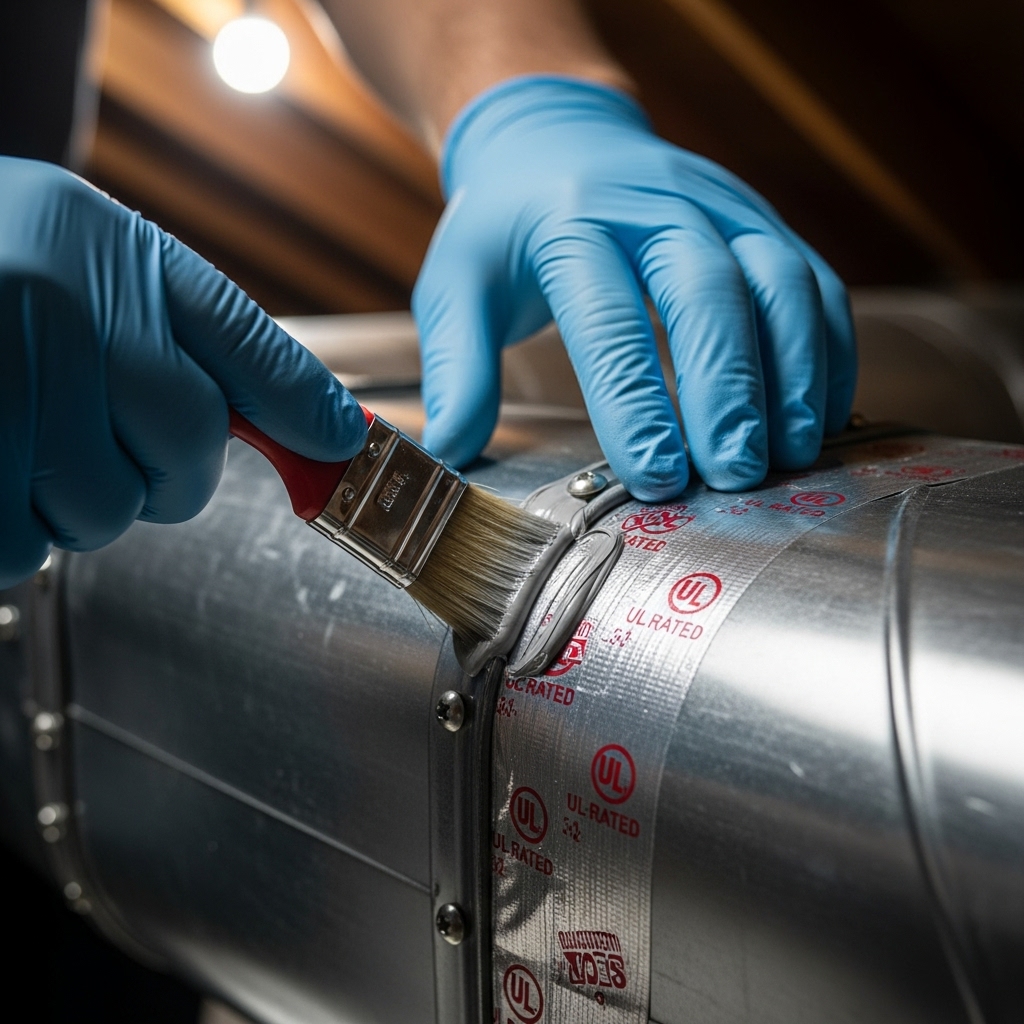In Los Angeles, the conversation about ductwork has two inseparable threads: replacement and sealing. You can install new ducts, but without meticulous sealing, performance will fall short. Likewise, sealing old, compromised ducts without addressing design flaws is a half-measure. The best results come from treating replacement and sealing as a single craft, executed with discipline and tailored to the realities of Southern California homes. To visualize how professionals approach this, a quick primer on proper air duct replacement is a strong first step, because the techniques that produce comfort and quiet are the same techniques that keep air where it belongs.
Homes here run the gamut from classic bungalows to hillside masterpieces. Attics bake in summer, crawlspaces cool down in winter, and coastal air leaves a trace of salt almost everywhere. These conditions challenge ducts in ways that are easy to underestimate. When you plan replacement and sealing together, you are building a system that laughs off heat, fights dust ingress, and stays quiet and efficient when others would struggle.
Why Sealing Is the Partner to Replacement
Every joint, takeoff, collar, and boot is an invitation for leakage if not sealed correctly. Ducts pass through environments that are unconditioned and dusty. Without sealing, a portion of the air your system works to heat or cool will never reach your rooms. You will feel that loss as rooms that lag, equipment that runs longer, and filters that collect debris faster. Proper sealing—mastic at connections, UL-rated tapes at seams, and boots sealed to the building shell—contains that air and protects indoor air quality by controlling where it travels.
Replacement creates opportunities to seal in ways that repairs cannot. When ducts are out, installers can evaluate framing, patch holes, and prepare clean surfaces. They can correct awkward routes that forced kinks and bends in the past. They also can ensure that returns are sized and lined properly so the system breathes quietly without pulling dusty air from the attic or crawlspace. The result is a network that delivers air predictably and whispers rather than shouts.
Design: The Silent Engine Behind Performance
Sealing cannot fix an undersized return or an overlong branch. That is why design sits upstream of every great installation. Proper trunk sizing, logical branch routing, and balanced dampers ensure that sealing is the final polish, not the bandage. In Los Angeles, rooms with afternoon sun loads, open-plan living areas, and additions built under different codes all complicate the picture. A good design recognizes these and uses replacement as the moment to bring the entire home into balance.
Material selection also supports sealing. Rigid trunks provide surfaces where mastic bonds cleanly, while quality flexible ducts resist kinking and maintain insulation integrity. Choosing the right materials for each section helps sealing succeed and last.
Attic and Crawlspace Realities
Heat and dust in attics are everyday challenges. Sealed ducts combat these by keeping conditioned air inside and attic air out. In crawlspaces, moisture and limited space push installers to choose supports and routes carefully. A sealed boot that is coupled tightly to the floor or ceiling prevents the system from drawing unfiltered air. Support spacing prevents sagging that could create pockets where dust accumulates or airflow slows.
Many Los Angeles homes show the scars of past changes—additions, wall moves, and equipment swaps. Replacement and sealing together give you a chance to redraw the map. You can streamline trunk lines, shorten outlier branches, and solve comfort complaints that have kept you fiddling with the thermostat for years.
Testing and Verification: Trust but Verify
Good sealing is visible, but performance is measurable. After installation, ducts are tested for leakage. Systems built with sealing in mind pass these tests with margin, because technicians worked toward a number from day one. Verification is not just about compliance; it is about confidence that the air you paid to condition is reaching your rooms. For homeowners, the difference shows up as steadier temperatures and reduced dust—a home that feels healthier.
Balancing follows testing. Adjusting dampers to bring rooms into harmony completes the picture. This is where the art meets the science, and it is why installers who care about sealing also care about sound and comfort. They want the system to test well and live well.
Mid-Project Checkpoints That Protect Quality
The middle of a project is where discipline matters most. Installers pause to verify that every new takeoff is sealed, that supports hold ducts at the right height, and that boots are sealed to the building shell. They correct bends that could create turbulence and recheck return pathways for quiet operation. By catching small issues early, teams avoid rework and ensure the final system is as clean inside as it looks outside.
For homeowners, these checkpoints are a chance to see value in action. Ask for a brief attic tour or photos. You do not need to become an expert; just look for consistent sealing and tidy routing. You will quickly recognize the difference between rushed work and craftsmanship.
Health Benefits You Can Feel
Leaky ducts can pull in fibers, dust, and odors. Sealed ducts protect indoor air quality by keeping the system focused on filtered air. For families with allergies or sensitivities, this change can be transformative. The home smells cleaner, surfaces stay dust-free longer, and the system runs at a calmer cadence.
In wildfire season, the benefits are even more pronounced. A sealed system minimizes pathways for smoky air to sneak in. Combined with proper filtration and smart operation, your home becomes a refuge when outdoor air quality dips.
Return Air: The Unsung Hero
Supply ducts get most of the attention, but returns are the lungs of the system. A quiet, properly sized return keeps air moving smoothly. During replacement, many homes benefit from return upgrades—larger grilles, lined chases, or improved duct routing—to reduce noise and ease the load on the blower. Sealing return connections prevents dust from bypassing filters and entering the living space.
Serviceability and the Long View
Sealing should never make a system hard to service. Thoughtful teams install access where needed and route ducts to preserve room for filter changes and inspection. They label dampers and leave a clean layout that future technicians can understand. Over the years, this foresight keeps maintenance efficient and protects the performance you invested in.
What to Expect Day by Day
Plan for a first day of removal, protection, and staging. The next phase is trunk installation, sealing as each connection is made. Branches follow, with supports placed to keep runs smooth and sag-free. Throughout, installers perform small tests—feeling for air leaks, listening for noise, and simplifying routes. By the final day, the system is sealed, balanced, and ready for verification.
When crews treat sealing as part of every step, not a final patch, you feel it in the results. Air arrives where it should, quietly and consistently. The system fades into the background of your life, which is the best compliment any duct network can receive.
Frequently Asked Questions
Is sealing still important if all the ducts are brand new?
Absolutely. New ducts without proper sealing will leak through joints and seams. Sealing ensures the system delivers conditioned air to your rooms rather than losing it to the attic or crawlspace.
What materials are best for sealing?
Mastic is the workhorse for joints and takeoffs, with UL-rated foil tapes supporting where appropriate. Boot-to-building connections should be sealed to prevent air and dust bypass around registers.
How does design influence sealing success?
Good design minimizes unnecessary joints and sharp bends, making sealing more effective and durable. Proper trunk sizing and branch routing reduce turbulence and help seals hold over time.
Will sealed ducts make my home quieter?
Often, yes. Sealing reduces whistling and turbulence at joints, and when combined with correct sizing and routing, it leads to a calmer sound profile at registers and along trunks.
Are permits and tests required?
Many projects in Los Angeles include permits and performance verification such as duct leakage testing. Professionals plan for this from the start so the final system meets expectations without last-minute scrambling.
How long does replacement and sealing take?
Timeframes vary with access, complexity, and system size, but single-system homes are commonly completed within a focused schedule measured in days, with larger or more intricate homes taking longer to ensure quality.
Can I seal existing ducts instead of replacing them?
If the ducts are structurally sound and correctly sized, targeted sealing and repairs can help. However, when design flaws or material degradation are significant, replacement paired with sealing delivers a better long-term result.
How can I tell if sealing was done well?
Look for consistent mastic at joints, tight boot-to-building connections, well-supported runs, and a layout that feels intentional. Post-install tests and a quieter, more even home are the everyday proof.
Ready to bring replacement and sealing together?
If you are planning an upgrade, choose a team that treats these tasks as one craft. When you are ready to take the next step, explore expert air duct replacement to design, seal, and balance a system that makes your Los Angeles home feel better every day.

